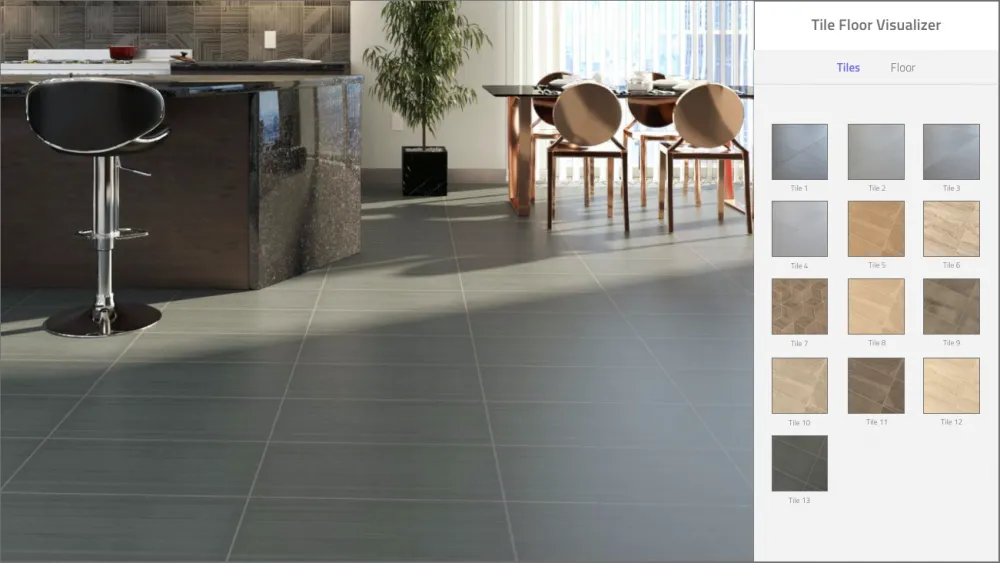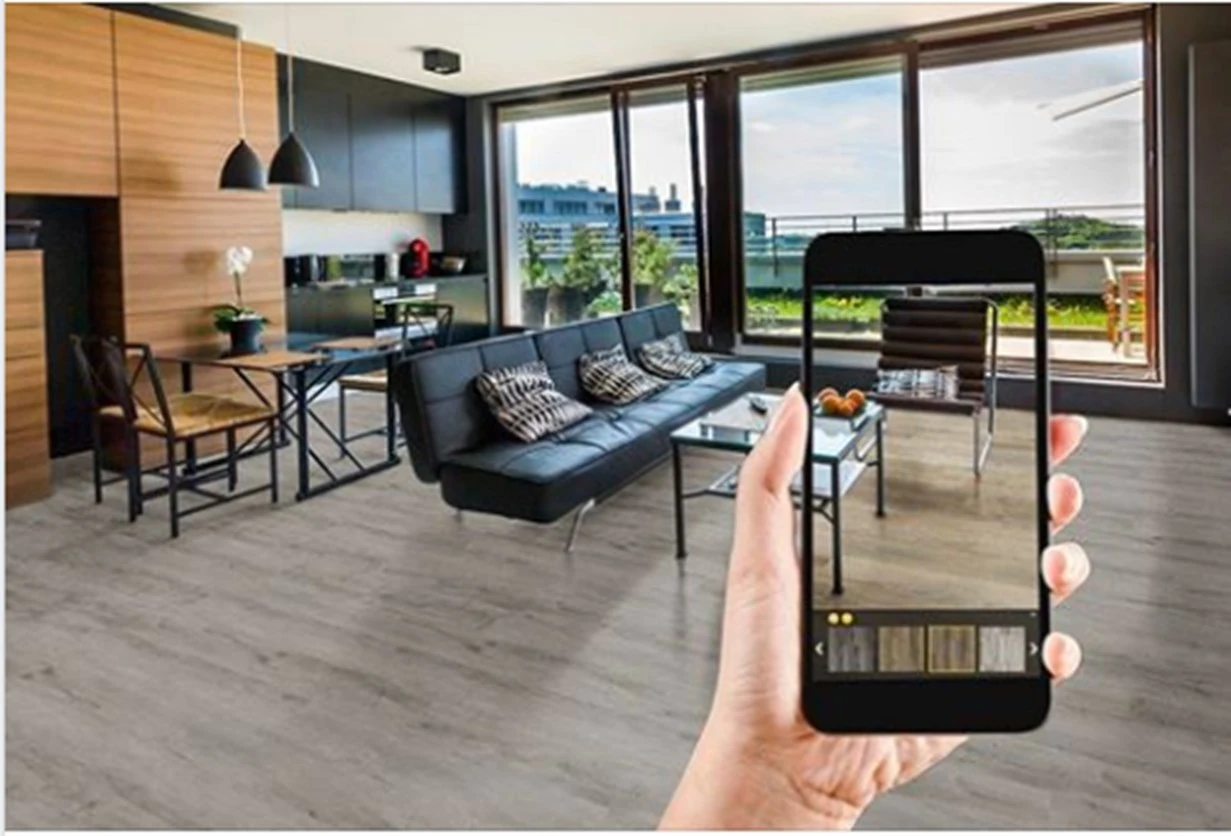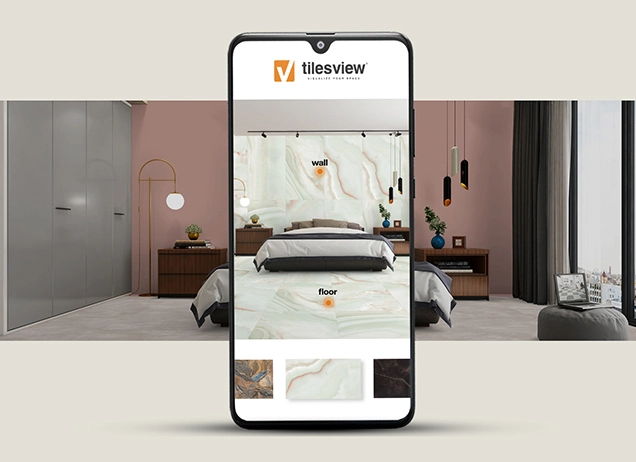Start Your 14-Day Free Trial !
Feb 17, 2023

Today’s business landscape is more competitive than ever. So, showroom owners and managers very well understand the vitality of standing out and providing customers with a memorable experience. Showroom visualizers play a great role here. These visualizers revolutionize the way businesses showcase their products. It increases client conversion rates.
Visualizers, also known as data visualizations, can transform complex data into easily understandable and visually appealing representations. Showrooms can harness the power of visualizers and create immersive and interactive experiences. It can captivate customers from the moment they step through the door.
What’s the biggest power of visualizers? It’s the ability to communicate information effectively. No need to bombard customers with overwhelming data or technical specifications. Visualizers use graphs, charts, and 3D renderings to present products in an engaging style.
Showcasing the latest tile and comparing product features becomes pretty easy. Visualizers allow showroom owners to tell a compelling story about the products without needing to elaborate. Doesn’t that save cost and effort?
Visualizers break down communication barriers. It lets customers explore products independently. It’s never a hassle for them to visualize how the products will fit into their own spaces. This level of interactivity enhances the overall customer experience. Besides that, it builds trust and confidence in the products being offered.
Today, consumers are increasingly seeking personalized and interactive experiences. So, it’s not tough to understand why showrooms equipped with visualizers have a competitive edge. Besides empowering sales, these visualizers also improve customer satisfaction and strengthen brand loyalty.
If you’re creating engaging and memorable experiences for customers, you’re directly boosting your sales. Visually appealing and interactive environments can leave a lasting impression on visitors. So this turns showroom visitors into loyal customers and brand advocates.
It won’t be wrong to mention that visualizers are elevating showroom experiences to a level like never before.
Static displays and one-size-fits-all presentations have been matters of the past now. With visualizers, showrooms can transform into interactive and dynamic spaces. These capture the imagination of potential buyers very easily.

Now, when customers step into a showroom equipped with visualizers, they feel totally amazed as they’re greeted with an array of captivating displays. Customers can actively engage with visualizers, customizing designs, and a lot more. They can explore various color options and virtually place products in their own living spaces.
Don’t you think this level of interactivity is enough to spark curiosity and encourage customers to spend more time in the showroom? Yes, they end up exploring various product offerings and envisioning how they can enhance their homes or projects, and finally, buying them (most of the time).
The seamless integration of technology and design undoubtedly provides an enjoyable shopping experience. Also, it positions the showroom as a hub of inspiration and creativity.
Moreover, engaging experiences with visualizers extend beyond the showroom walls. It isn’t tough to figure out how visualizers help reach a broader audience. This omnichannel approach not only attracts tech-savvy customers but also serves different lifestyles.
The journey from data to design is a transformative process when we talk about showroom experiences. It has redefined how customers interact with products. Showroom visualizers play a huge role in bridging this gap. Its main purpose is to turn raw data into visually stunning designs that resonate with customers on a whole new level.
Data-driven decision-making is at the heart of successful businesses, and we can’t exclude showrooms! However, if you throw raw data at the customer, it proves to be pretty uninviting.
Visualizers step in to convert this data into captivating visuals. Thus, it makes it easier for customers to fully understand the products.
Showrooms can showcase a myriad of design possibilities for each product by leveraging visualizers. This way, showrooms can empower customers to envision how the products will fit into their own spaces. Customers really enjoy it when they have the flexibility to experiment with different color schemes to visualize spatial arrangements. It won’t be wrong to say that visualizers enable customers to become co-creators of their dream designs.
The redefined customer interaction with visualizers actually goes beyond mere observation. There’s an active engagement and collaboration between customers and the showroom because of that.
Customers feel like enthusiastic participants in the design process. This further leads to a sense of ownership and emotional attachment to the products they choose.
Because of this transformation in customer interaction, customer satisfaction and sales both increase. Customers feel confident in their choices as they can explore various design options through visualizers.
Also, visualizers are of immersive and interactive nature. Thus it creates a memorable shopping experience. This highly encourages repeat visits and positive word-of-mouth referrals.
Innovation and technology have joined forces and brought groundbreaking solutions to showroom owners looking for a way to elevate their customer experiences. Tilesview is a tremendous platform that unlocks the full potential of next-gen showroom visualizations. It was developed after around 1.5 years of testing and experiments.
TilesView has entirely shifted the style of how showrooms engage with customers. It offers a seamless and intuitive platform for showcasing products in a much more fascinating way. TilesView enables showroom owners to create captivating 3D visualizations, thanks to TilesView’s user-friendly interface. It truly leaves a lasting impression on customers.

TilesView’s versatility and adaptability to different industries and product types set it apart. TilesView can be tailored to suit the specific needs of any showroom selling tiles. This platform is designed to support an extensive library of design options, textures, and finishes. This allows customers to explore a tremendous range of possibilities.
TilesView is a gateway to immersive visualizations. It enables customers to take virtual tours of their dream spaces. They can easily experiment with various products and visualize how each element comes together in harmony. Because of the high level of interactivity, customers are filled with creativity and excitement. This turns the showroom into an immersive playground where customers can bring their visions to life.
TilesView's integration with digital platforms and online channels is very easy. It opens up new avenues for customer engagement. It’s easy for showrooms to reach customers beyond physical locations. This provides the freedom to interact with visualizations from anywhere, anytime. Isn’t that amazing?
You can introduce TilesView into your showroom and enhance the customer experience, besides positioning your business at the forefront of technological innovation. You can embrace the power of next-gen showroom visualizations with TilesView if you’re really aiming to take a giant leap toward the future of retail excellence.
Showroom success hinges on how they captivate customers and provide unforgettable experiences. Visualizers have emerged as a game-changing tool, especially when it comes to converting showroom visitors into clients.
Those showrooms attain success that successfully engaging customers on a deeper level. Visualizers enable your customers to interact with products that they hardly imagined before. They can conveniently customize designs and explore various options. On top of everything, they’re able to visualize how products will look in their own spaces.
This heightened level of engagement fosters a strong emotional connection between customers and your products. This proves to be greatly beneficial in comparison to offline showroom visits as it increases the likelihood of conversion.
No showroom visitor is going to convert as a client without feeling confident. This applies even more when we talk about significant investments in home decor or renovation projects. With visualizers, customers can easily understand product features, compare options, and make the best choices. As your showroom empowers customers with the necessary information, you actually position your showroom as a reliable source for their needs.
We certainly can't underestimate the impact of visualizers on sales. When you present products in an engaging and interactive manner, you actually open the chances of upselling complementary items, accessories, or premium options. Customers are more likely to explore additional offerings when they go through the visual experience. This leads to higher average transaction values and greater revenue for your business.
It's a pretty unique and memorable brand experience when a visitor visits a showroom that has visualizers. When customers are delighted by the interactivity and personalized designs, there are high chances that they become brand advocates and further share their positive experiences with buddies and family. We all know that word-of-mouth marketing is a powerful driver of brand loyalty. Visualizers actually provide the fuel to ignite this viral spread of positive reviews.
Visualizers don’t just have a positive impact on the customers but also streamline showroom operations. Sales representatives can focus more on offering personal assistance to interested customers. Visualizers handle initial product exploration, so the pressure on these representatives is very less. Due to this high-level efficiency, showrooms are able to use their team's time and resources, and hence, enhance the productivity of your showroom.